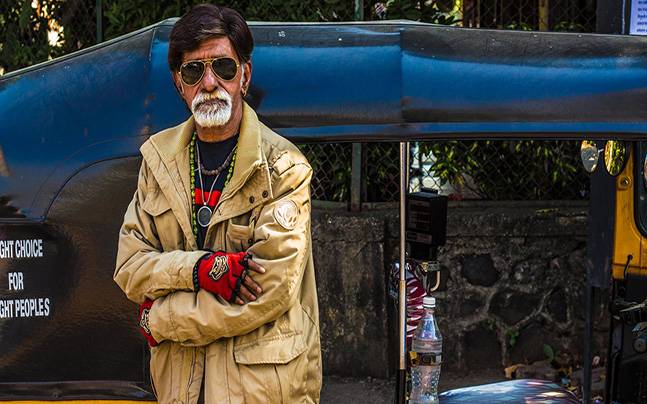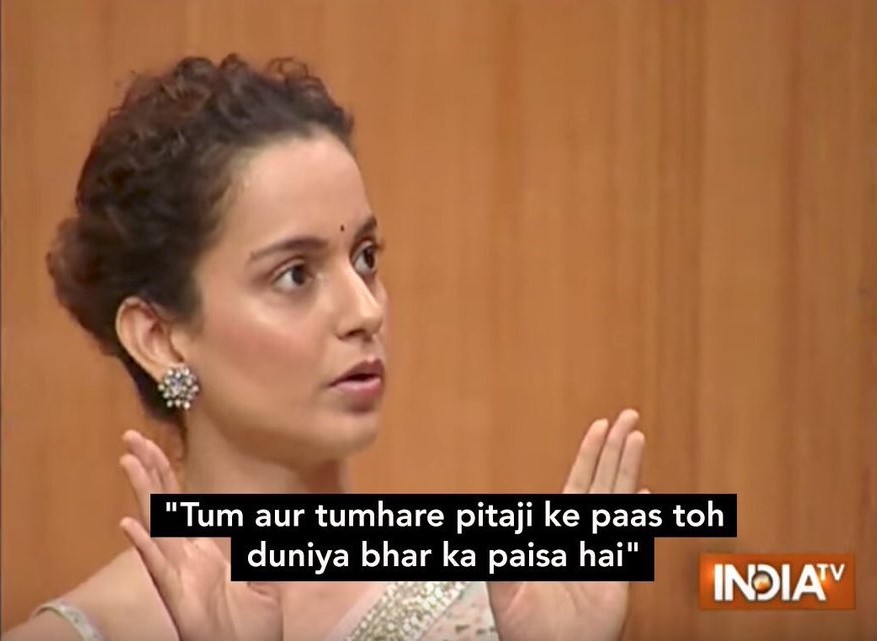We strut across malls and are enamored by the dazzle of the few hundred lights shining upon every commodity put up for display there. We visit lavish, uber-cool cafes and spend a few hundred bucks on getting a coffee personalized with our name. And then we come out from those places and are greeted with people living and selling their wares on the street, with no more than a single 100-watt bulb illuminating their thatched-roof establishments. You look down upon such “downmarket” shops and feel pitiable for the poor souls rotting in oblivion. How do they survive? How do they manage to get up every day and go back to their menial jobs that provide no money at all? You wonder, don’t you?
The answer – they don’t! They don’t wake up to and sleep with the kind of poverty that is often fallaciously associated to them! They don’t “just survive”; they grow, grow phenomenally, grow more than they want their thatched roofs to make you believe. As a matter of fact, what we told you that they actually make more profit than even seemingly well-established malls and all other things with razzmatazz? We know you’re no Indian TV serial bahu, but,
shock laga laga laga shock laga?
Be prepared for more, for TCF is here to make you see how 3 seemingly small businesses make a lot more money than any of us could ever fathom!
- The not-so-humble-after-all Vada Pav Sellers
One of the most essential qualifications for being a Mumbaikar is to love Vada Pav. No kidding – it is an absolutely mandatory degree that you must have if you do not want to be outcast by the society in Mumbai! Vada Pav is for Mumbaikars what Anushka bhabhi is for Virat Kohli. Thus it is indeed surprising that people still purview Vada Pav walas under the lens of poverty.
Here’s the truth though – as long as you have you a Vada Pav, you WILL make money! And the more Vada Pavs you have, the more money you’ll make! Don’t believe us? Let’s break it down-
Assume a Vada Pav seller sells, on an average, 20 vada pavs in an hour. The cost prevailing nowadays is generally Rs. 15. Which brings about the following math –
- Earnings per hour: Rs. 300
- Average hours worked each day: From 7 a.m to 10 p.m, i.e 15 hours on a normal day
- Daily earnings: 15hrs x Rs. 300/- = Rs. 4500
- Monthly earnings: 30 days x Rs. 4500 = Rs. 1,35,000
- Yearly Earnings: 12 months x Rs. 1,35,000 = Rs. 16,20,000
Impressed yet? Carry on…
Almost every seller also sells Samosa Pav, at the same rates, being closely related to the prior snack. Assume he sells 15 Samosa pavs in the same one hour. If you’re sufficiently good at maths (in case you aren’t, head here), you’d know that a rough estimate can be quickly provided as follows – Rs. 16,20,000 x 15/20 = Rs. 12,15,000.
That’s Rs. 28,35,000 a year. From vada and samosa pav alone. And they don’t even pay taxes, because well, why will an I-T guy harass someone who looks poor and sells stuff on the road in his dhoti-banyan?

We’re not going to do the math here, but imagine the earnings of those sellers, like Anand Vada Pav, which also host a consortium of other dishes like sandwiches, frankies, dosas, etc.
To get a glimpse of the magnitude of the money involved here, check out the story of the crorepati vada pav waala - Dheeraj Gupta
What if we told you that this not just a Mumbai thing? Hell, what if we told you that this is not even just an Indian thing? Check out this awesome tale of a Londoner who is making crores by selling vada pavs there!
(Note: The expense side of the cost sheet not provided as it is subject to multitude of variables which is not feasible to be discussed or explained here)
2) Xerox-cum-stationery store
Ahh, the familiar yellow colored banners! How we desperately look out for a glimpse of those when we need to submit Aadhar Card copies for, well, everything nowadays. Admit it – xerox shops are the reason you’ve survived college. That last minute rush for notes, entire classrooms hoarding the poor guy with shouts of “bhaiyya mera kar do na abhi late ho raha hai”… it’s not surprising that this meme got so famous on Whatsapp –
While it is unfeasible to get down to the earnings per paper, let’s take rough estimates. At any given point, some school/college/institution etc will have some exam going on, or about to commence soon. Which means the demand for notes never really goes down. Also, with textbooks being faded out and making way for e-books and PDF files, combined with increased awareness among students about the effects of excess screen viewing, demand for bulk prints and Xerox is at an all-time high. So let’s try some maths here –
- Estimated sheets black and white xeroxed a month, taking into consideration inter-day variations: Roughly 3000-5000@Re. 1/- = 3000-5000
- Estimated colour xeroxes for special purposes: Roughly 500-1000@Rs. 5/- = 2500-5000
- Estimated black and white printouts a month: Roughly 1000-2000@Rs. 5/- = 5000-10000
- Estimated colour printouts a month: Roughly 500-1000@Rs. 10/- = 5000-10000
Going as per these established market rates which are unlikely to differ in a perfect competition market that exists, the owner is likely to earn anywhere from Rs. 17500-30000 a month from just xeroxing and printouts. And that’s just rough averages. For those located in close proximity to schools and colleges, the numbers can be a multiple of 2, if not 3.
Now think of the twist, when a shop runs additional services, like spiral binding and laminating, which most do. Also, when they start selling stationery like pens and files, which again, most do. Suffice to say, any xerox shop would earn close to 40,000-50,000 bucks a month minimum? How many graduates ever reach that level?
(Note: The expense side of the cost sheet not provided as it is subject to multitude of variables which is not feasible to be discussed or explained here)
3) Driving Home the Money

The most irritating of the lot, some might say? Talk about constant demands and strikes for fare hikes, fare refusals for short distances, their uncanny ability to drive over every pothole in the best way to break your back… well you can go on complaining all you want. You won’t though if you’re the driver. Because these fellows have quite a laugh along with their merry ride to the bank! Their constant demands for fare hikes may make one think they’re getting peanuts out of their jobs, but the stats suggest otherwise.
Let’s do some costing here. All autos run on CNG, the cost of which is approximately Rs. 25 per kg in Mumbai, subject to minute deviations from 24-27 depending on the taxes levied by the Municipal Corporation holding jurisdiction in that area. Each kg of CNG gives an approximate mileage of 25-28 kms. Also, the base fare is Rs. 18 for 1.5kms, and Rs. 12.19 for every subsequent km. Assuming auto driver drives on an average, 100 km total on an average day, we get the following numbers –
- Earnings for 100 kms: Approximately Rs. 1500-2000, depending no of trips making up the 100 kms, as also other additives such as luggage and waiting time charge)
- CNG required for 100 km: Approximately 4-5 kgs.
- Expense on fuel: Rs. 100-150
- Profit per day: Rs. 1300-1900
That is a cool Rs. 40,000-60,000 a month! After providing for maintenance, a driver can comfortably earn close to 30,000-50,000 bucks a month!
And what if I told you that Ola/Uber drivers earn even more than that? Their costing works on different methodologies, which we are not going into length here, but the crux of the matter is, that our point has been proven! Even as you take that rickshaw in the sweltering heat, jostling with a dozen other commuters, and reach your office for the pesky 15000 a month job (worse if you’re an intern!), your ragged rickshaw wala uncle has twirled his mustachee for a happy 40K-odd a month. Which is why you need to ask yourself – Are they really ones driving us? Or is it vice versa?
Suddenly, life seems like a big lie doesn’t it? All these fancy white-collared jobs that you were lured into, and still earn a penny of what these “small”, “pitiable” people get.
Anyway, let us know when you open your own vada pav stall/xerox centre. We’ll visit sitting in our rickshaws. Front seat, screaming,

